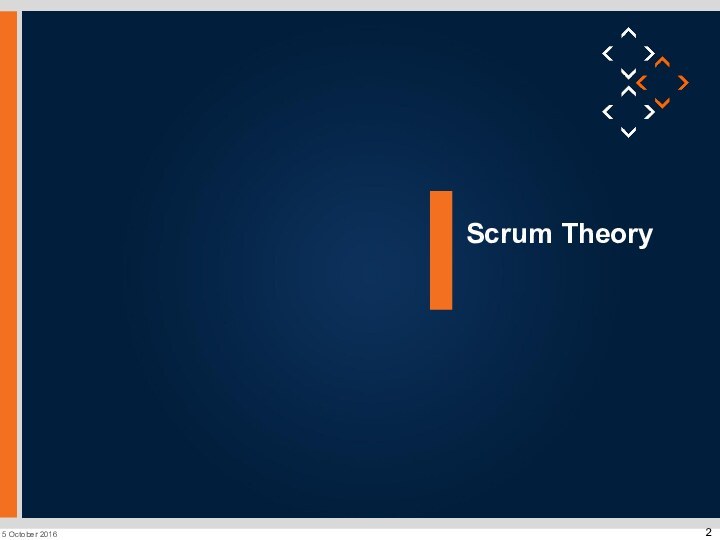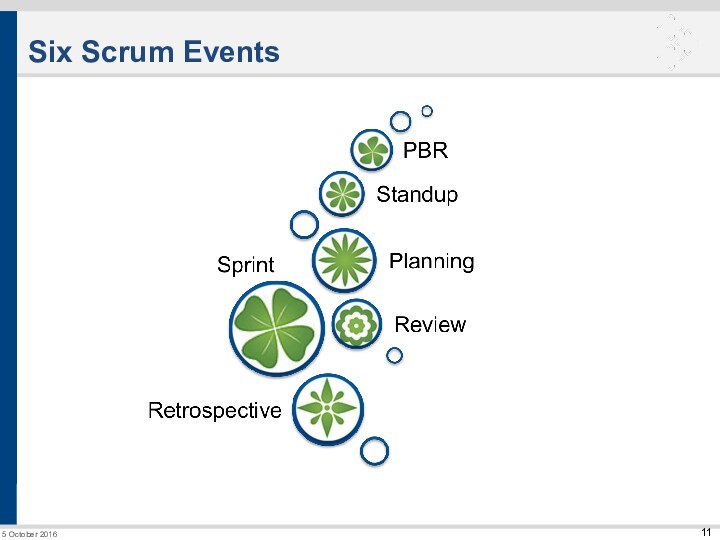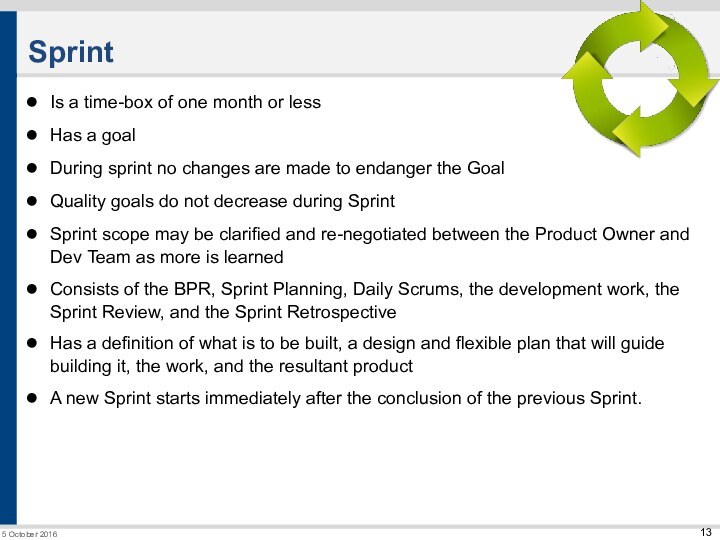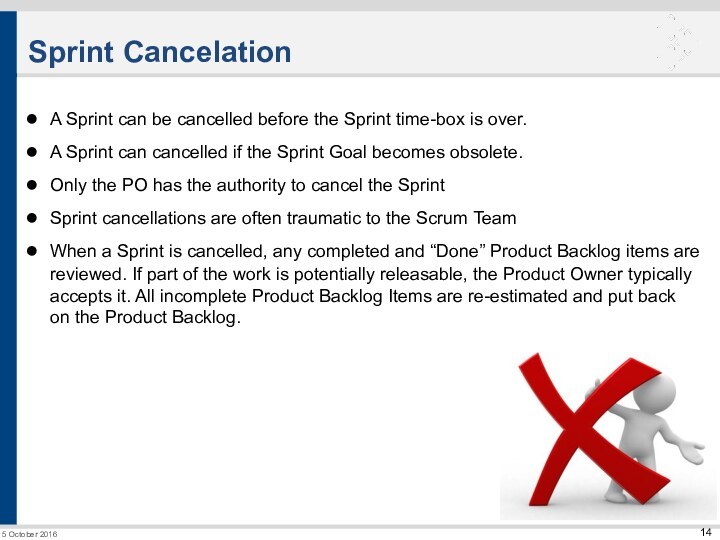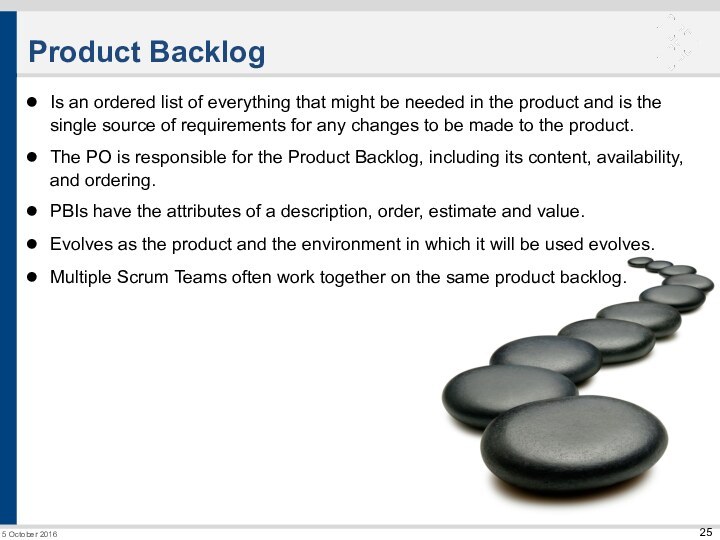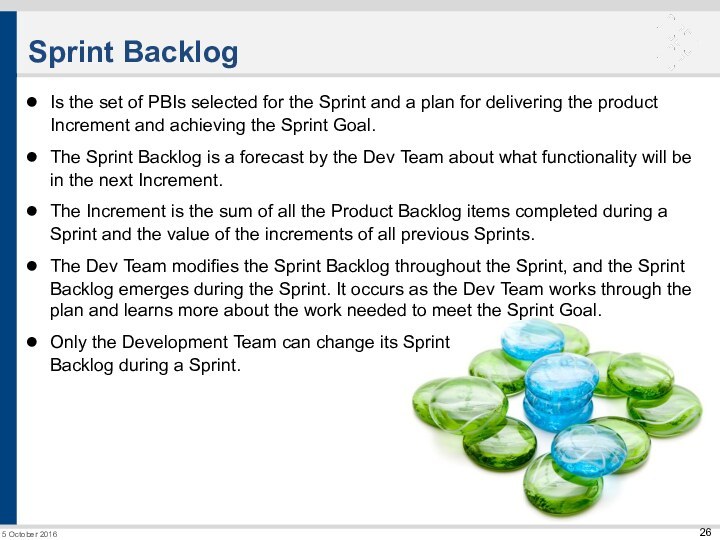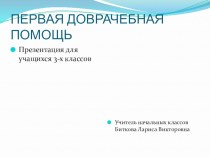address complex adaptive problems, while productively and creatively delivering
products of the highest possible value.Scrum is:
Lightweight
Simple to understand
Difficult to master
Scrum is a process framework that has been used to manage complex product development since the early 1990s. Scrum is not a process or a technique for building products; rather, it is a framework within which you can employ various processes and techniques.
The Scrum framework consists of Scrum Teams and their associated roles, events, artifacts, and rules. Each component within the framework serves a specific purpose and is essential to Scrum’s success and usage.
The rules of Scrum bind together the events, roles, and artifacts, governing the relationships and interaction between them.
5 October 2016

